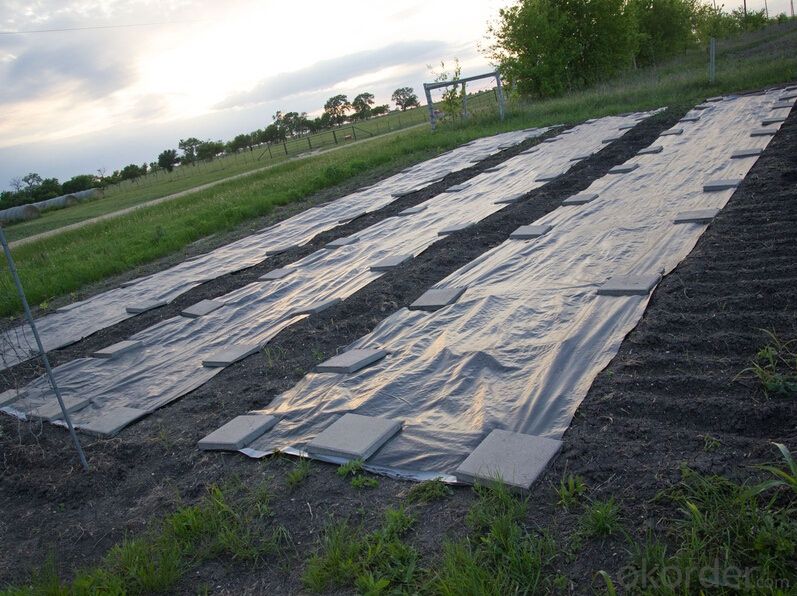- Understanding the Role of Geomembrane Liners in Waste Management
- Innovations in Geomembrane Liners for Water Management
- Geomembrane Liners: A Comprehensive Guide
- The Future of Geomembrane Liners in Civil Engineering
- Geomembrane Liners: Enhancing Landfill Stability
Manager:
WhatsApp:+86 177 0135 2670
Tel:+86 177 0135 2670
Email:marketing@okorder.com
Address:3rd Floor, No.2 Building, No.1 Sanlihe Road
The Role of HDPE Geomembranes in Flood Control Systems
Flood control systems are a vital part of modern infrastructure, designed to protect communities and the environment from the devastating effects of flooding. One of the most effective materials used in these systems is High-Density Polyethylene (HDPE) geomembranes. These versatile and durable synthetic materials offer a range of benefits that make them ideal for flood control applications. In this article, we will explore the role of hdpe Geomembranes in flood control systems, their advantages, and how they contribute to the overall effectiveness of these systems.

The Science Behind HDPE Geomembranes
Before we delve into the specifics of how HDPE geomembranes are used in flood control systems, it's important to understand the science behind these materials. HDPE is a type of plastic that is known for its high strength-to-weight ratio, chemical resistance, and durability. It is made from the polymer polyethylene, which is derived from petroleum. The high-density variant of this polymer is what gives HDPE its unique properties, making it an excellent choice for use in flood control systems.
Versatility in Design and Application
One of the key advantages of HDPE geomembranes is their versatility. They can be easily molded into various shapes and sizes to fit the specific needs of a flood control project. This adaptability allows engineers to design customized solutions that are tailored to the unique challenges of each location. Whether it's a small-scale project to protect a local community or a large-scale system to manage water flow in a major river, HDPE geomembranes can be adapted to fit the requirements.
Durability and Longevity
Durability is another major selling point for HDPE geomembranes. These materials are designed to withstand the test of time, with a lifespan that can span several decades. This longevity is particularly important in flood control systems, where the infrastructure needs to remain effective and reliable over long periods. The resistance of HDPE to UV radiation, chemicals, and extreme temperatures also contributes to its durability, ensuring that the geomembranes maintain their integrity even in harsh conditions.
Environmental Impact and Sustainability
In today's world, where environmental concerns are at the forefront of many discussions, the sustainability of materials used in construction projects is a critical consideration. HDPE geomembranes are not only effective in flood control but also have a lower environmental impact compared to many traditional materials. They are made from recyclable materials and can be reused or repurposed at the end of their life cycle, reducing waste and contributing to a circular economy.
Installation and Maintenance
The installation process for HDPE geomembranes is relatively straightforward, which is another reason they are favored in flood control systems. They can be easily transported to the site and installed with minimal disruption to the surrounding environment. The maintenance requirements for these geomembranes are also relatively low, which can result in cost savings for the project over time.
Case Studies: Real-World Applications
To better understand the impact of HDPE geomembranes in flood control systems, let's look at some real-world examples. In the Netherlands, a country well-known for its expertise in water management, HDPE geomembranes have been used to create innovative flood barriers and retention systems. These systems not only protect the population from flooding but also serve as a testament to the effectiveness of HDPE in such applications.
The Future of Flood Control with HDPE Geomembranes
As we look to the future, the role of HDPE geomembranes in flood control systems is likely to become even more significant. With climate change leading to more frequent and severe weather events, the need for robust and reliable flood control infrastructure is greater than ever. HDPE geomembranes offer a solution that is both effective and sustainable, making them an ideal choice for the challenges that lie ahead.
Conclusion
In conclusion, HDPE geomembranes play a crucial role in flood control systems, providing a durable, versatile, and environmentally friendly solution to the challenges posed by flooding. Their adaptability, longevity, and ease of installation and maintenance make them an ideal choice for a wide range of applications. As we continue to face the impacts of climate change and the need for effective flood control measures, the importance of HDPE geomembranes in protecting our communities and environment will only grow.
- Previous:HDPE Geomembranes in the Marine Environment: Challenges and Solutions
- Next:The Economic Benefits of Using HDPE Geomembranes






